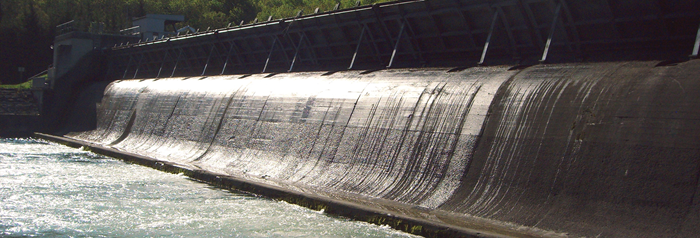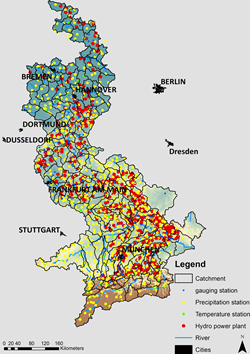Hydropower forecasts: Supporting energy trading and the use of renewable energies
Renewable energies are a cornerstone of sustainable development. Yet, their utilisation in the electrical power grid can be challenging.

Renewable energies are a cornerstone of sustainable development. Yet, their utilisation in the electrical power grid can be challenging. As most renewables depend a lot on environmental conditions such as wind or river runoff, their power production is fluctuating. An energy forecast - giving information on how much energy will be produced within the next days - can supply the relevant data to ensure that the power grid is fully utilised, e.g. by switching off conventional power plants or storing power.

DHI developed such a power forecast model for the German transmission network operator TenneT TSO GmbH. The forecast covers hydropower production from numerous German rivers covering an area of almost 200,000 km2. The model is based on a coupled hydrodynamic and rainfall–runoff model, which is driven by weather forecast data of over 800 rainfall stations and 400 temperature stations as well as grid based forecasts. These weather forecasts are supplied by one of the leading weather services in Europe, Meteomedia, which operates its own private weather measurement network. The energy forecasts are then calculated based on a statistical relation between discharge and energy production. TenneT TSO GmbH now receives daily hydropower forecasts for the whole area with a resolution of 15 minutes.
The system was implemented in 2011 and has since proven its reliability. Moreover, it is constantly updated with current measurements, to ensure a proper calibration. From 2012 onwards, DHI’s hydropower forecast is also used for energy trading at the EPEX Spotmarket.
Control area with all hydropower stations with a nominal power of less than 5 MW (red dots), meteorological stations (yellow and blue dots) and the used gauging stations (blue dots).
Read more